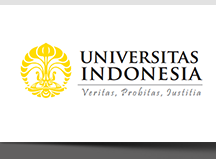Abstract
Understanding the microstructural and elemental composition of pulp capping materials is crucial for predicting their biocompatibility and effectiveness in promoting pulp healing. Objectives: This study aimed to characterize the microstructural and elemental properties of carbonated hydroxyapatite as a dental pulp-capping material. Methods: Carbonated hydroxyapatite was synthesized using the precipitation method. MTA and Apacal ART were obtained from commercial sources. The materials were prepared into disk-shaped specimens, hydrated in deionized water at 37°C for 14 days, and analyzed using scanning electron microscopy (SEM) and energy-dispersive X-ray spectroscopy (EDX). Results: SEM images revealed that MTA exhibited smooth, plate-like crystalline structures surrounded by a rougher matrix. Apacal ART showed smooth, spherical particles. carbonated hydroxyapatite displayed small, spherical, and irregularly shaped particles. EDX analysis indicated carbonated hydroxyapatite had the highest calcium content, followed by MTA and Apacal ART. Conclusion: Carbonated hydroxyapatite demonstrated favorable microstructural and elemental properties for use as a pulp capping agent. Its high calcium content and specific microstructural features suggest it could be a viable alternative to traditional materials like MTA and Apacal ART. Further clinical studies are needed to validate these findings and assess the in vivo efficacy of carbonated hydroxyapatite.
References
- Hanna SN, Perez Alfayate R, Prichard J. Vital pulp therapy an insight over the available literature and future expectations. Eur Endod J. 2020; 5(1):46–53.
- Iaculli F, Rodríguez-Lozano FJ, Briseño-Marroquín B, Wolf TG, Spagnuolo G, Rengo S. Vital pulp therapy of permanent teeth with reversible or irreversible pulpitis: An overview of the literature. J Clin Med. 2022; 11(14):4016.
- Muruganandhan J, Sujatha G, Poorni S, Srinivasan MR, Boreak N, Al-Kahtani A, Mashyakhy M, Chohan H, Bhandi S, Raj AT, et al. Comparison of four dental pulp-capping agents by cone-beam computed tomography and histological techniques—A split-mouth design ex vivo study. Appl Sci. 2021; 11(7):3045.
- Sari M, Hening P, Chotimah, Ana ID, Yusuf Y. Porous structure of bioceramics carbonated hydroxyapatite-based honeycomb scaffold for bone tissue engineering. Mater Today Commun. 2021; 26:102135.
- Calasans-Maia MD, Melo BR, Alves AT, Resende RF, Louro RS, Sartoretto SC, Granjeiro JM, Alves GG. Cytocompatibility and biocompatibility of nanostructured carbonated hydroxyapatite spheres for bone repair. J Appl Oral Sci. 2015; 23(6):599–608.
- Martin RI, Brown PW. Mechanical properties of hydroxyapatite formed at physiological temperature. J Mater Sci Mater Med. 1995; 6:138–43.
- Safarzadeh M, Chee CF, Ramesh S, Fauzi MA. Effect of sintering temperature on the morphology, crystallinity and mechanical properties of carbonated hydroxyapatite (CHA). Ceram Int. 2020; 46(17):26784–9.
- Mohammad NF, Othman R, Abdullah NA, Yeoh FY. In vitro evaluation of mesoporous carbonated hydroxyapatite in MC3T3-E1 osteoblast cells. Procedia Chem. 2016; 19:259–66.
- Ballal NV, Rao S, Rao N, Urala A, Yoo J-S, Al-Haj Husain N, Özcan M. Evaluation of two different types of mineral trioxide aggregate cements as direct pulp capping agents in human teeth. Appl Sci. 2021; 11(21):10455.
- Anthrayose P, Aggarwal A, Yadav S, Nawal RR, Talwar S. Microscopic and elemental characterization of hydrated dental pulp capping agents. J Conserv Dent. 2021; 24(5):496–501.
- Othman R, Mustafa Z, Loon CW, Noor AF. Effect of calcium precursors and pH on the precipitation of carbonated hydroxyapatite. Procedia Chem. 2016; 19:539–45.
- Priyadharshini SS, Ragavendran C, Sherwood A, Ramya JR, Krithikadatta J. Evaluation of mineral induction ability and cytotoxicity of carbonated hydroxyapatite for pulp tissue regeneration: An in vitro study. Restor Dent Endod. 2024; 49(4):e40.
- Mariyam M, Sunarintyas S, Yuliatun L, Irnawati D, Hatmanto AD, Nuryono N. Physicochemical and antibacterial properties of ZnO/chitosan-modified mineral trioxide aggregate composites. Case Stud Chem Environ Eng. 2024; 9:100749.
- Guimarães BM, Prati C, Duarte MAH, Bramante CM, Gandolfi MG. Physicochemical properties of calcium silicate-based formulations MTA Repair HP and MTA Vitalcem. J Appl Oral Sci. 2018; 26:e2017115.
- Voicu G, Didilescu AC, Stoian AB, Dumitriu C, Greabu M, Andrei M. Mineralogical and microstructural characteristics of two dental pulp capping materials. Materials (Basel). 2019; 12(11):1772.
- Islam R, Islam MRR, Tanaka T, Alam MK, Ahmed HMA, Sano H. Direct pulp capping procedures - Evidence and practice. Jpn Dent Sci Rev. 2023; 59:48–61.
- Camilleri J. Hydration mechanisms of mineral trioxide aggregate. Int Endod J. 2007; 40(6):462–70.
- Kang S. Mineralization-inducing potentials of calcium silicate-based pulp capping materials in human dental pulp cells. Yeungnam Univ J Med. 2020; 37(3):217–25.
- Acharya S, Gurunathan D, Assiry AA, Luke AM, Shetty KP, Karobari MI. Comparison of modified NeoPutty MTA®, Biodentine, and Calcium Hydroxide in indirect pulp therapy in deciduous teeth: An in vivo clinical study. Int J Clin Pediatr Dent. 2024; 17(9):1025–9
Recommended Citation
Priyadharshini, S., Ragavendran, C., Ramya, J., & Sherwood, A. Microstructural and Elemental Characterization of Hydrated Carbonated Hydroxyapatite as Pulp Capping Agent: An in vitro Study. J Dent Indones. 2025;32(1): 55-60
Included in
Dental Hygiene Commons, Dental Materials Commons, Endodontics and Endodontology Commons, Health Economics Commons, Oral and Maxillofacial Surgery Commons, Oral Biology and Oral Pathology Commons, Orthodontics and Orthodontology Commons, Pediatric Dentistry and Pedodontics Commons, Periodontics and Periodontology Commons


